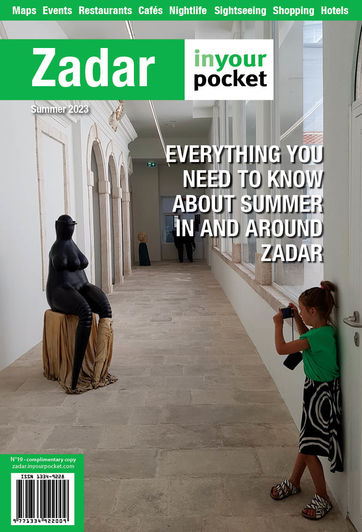Benkovac Tourist Board
At Asseria, near Podgrađe, 6km east of Benkovac are the remains of an urban settlement almost a kilometre long. Asseria was founded long before the Romans set foot on these lands. It was a powerful centre of the Liburnian tribe, whose territories stretched for miles along the eastern Adriatic coast. When the Romans later occupied these lands, Asseria grew to become a municipality with a governing council. The town was inhabited from the Bronze Age right up until the late Roman period – a time span of at least a millennium.
Asseria’s blossoming as a town took place during the 1st and 2nd centuries AD, when it was one of the main settlements of the Liburnians. The oldest remains in Asseria which have been found to date are from the 5th century BC, and show us a town with walls 7m high and 3.2m thick, built as part of the military belt protecting the rich cultural life on the coast from barbarian invasion from inland. Built on the proscribed lines of a Roman city, Asseria had a town square, a water system, public baths and a necropolis where cylindrical gravestones known as “cipus” have been discovered. The most important Roman monument is a triumphal arch, one of seven entrances into the city, built in 113 AD in honour of Roman Emperor Trajan.
Annual archaeological digs at Asseria are revealing more and more fascinating layers of history beneath. Ceramics from the Greek period that predated the Roman settlement here have been unearthed, and also from the age of the Liburnians before them. As you’ll know if you’ve visited the Archaeological Museum in Zadar or Nin, such relics of one of the oldest European civilisations are not only awe-inspiring due to their age, but also because of their simple beauty. Visiting Asseria is a chance not only to see more of these, but also to experience the scale of such an old settlement in its entirety.
The Church of St Martin near Benkovac yielded a few surprises some years ago, when an old storeroom was opened up and found to contain more than 2000 silver pieces from the treasury of King Koloman (or Kalman) of Hungary, part of the riches he used to finance his quest for the Croatian crown. (His quest was successful – as part of a treaty, he was crowned King of Croatia in 1102 in Biograd, the first time in history that the Kingdoms of Croatia and Hungary were joined).
The golden era of Asseria came to an end when Avar (and sometimes Slav) tribes swept across the plains of Europe, and the Roman Empire crumbled. The last mention of the settlement is from the 11th century.
You can also see remains from the days when this whole area boasted influence and might at Nadin (Nedinum) and Karin (Corinium). Karin lies on the mouth of the river Karišnica, where it widens into the lagoon named the “Karin Sea”, with clear water for swimming and curative mud in some places. Here stands a fine example of medieval religious architecture, a 15th century Franciscan monastery, built on the site of a Benedictine monastery. There is a medieval fort at Perušić and a beautiful 15th century fort at Kličevica.
Another important historic site near Benkovac is the small town of Sopot, where a part of the estates of Prince Branimir, historically the most important Croatian ruler, was found - a 9th century fragment from a pre-Romanesque basilica with an inscription testifying to his rule and the existence of a Croatian state (dux Cruatorum).
In Benkovac itself, the Kaštel still stands today – a proud and austere fort with two south-facing towers, which now houses the local museum (Obitelji Benkovića 9, tel. (023) 68 10 55. Open 08:00-15:00. Closed Sat, Sun). It was built at the beginning of the 16th century by the Benković family (after whom Benkovac most probably takes its name). The nearby Church of St Anthony of Padua was built at around the same time, according to archives in the bishopric of Nin. Once upon a time, the Kaštel acted as a strategic defence point guarding a county called Luka and its main thoroughfare called “The Great Road” (Velika cesta, or Via Magna), which passed on its way to Oštrovica – an important fort belonging to the Šubić family, prominent in Croatian history.
Over the past decades, Benkovac and its surroundings, like much of Dalmatia, have suffered the same fate of depopulation, as young people leave in search of work. Despite the additional trauma of war, today’s Benkovac is building its economy by making the most of the potential of the surrounding countryside and the unparalleled treasures of Croatian cultural history that are hidden within. See also our report on agrotourism in





Comments